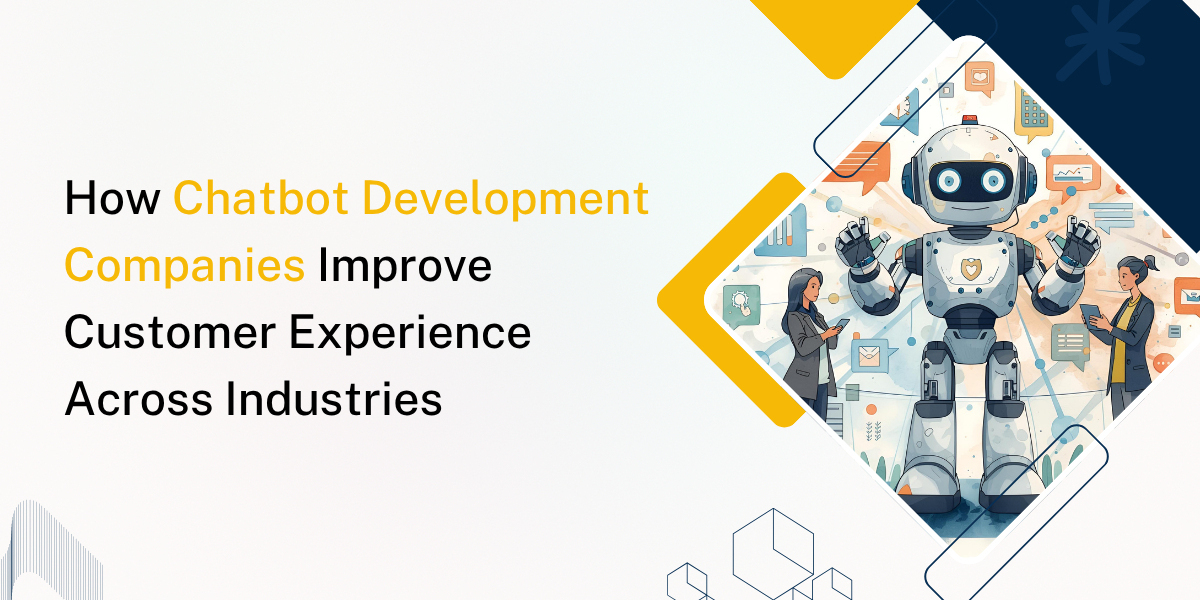Customer experience is a top priority for businesses in every sector. As customer expectations rise, companies are under pressure to provide fast, accurate, and personalized support around the clock. Chatbot development companies have stepped in to meet this demand using advanced automation and intelligent software solutions.
What Is Chatbot Development?
Chatbot development involves the creation of software programs that can simulate conversation with users. These bots are trained to recognize language patterns, understand intent, and provide relevant responses.
The development process includes:
Defining goals and use cases
Mapping conversation flows
Integrating backend systems
Training natural language models
Testing for accuracy and reliability
Monitoring performance post-launch
A chatbot development company ensures the bot delivers the right response at the right time through every interaction.
Technical Features That Drive Better Customer Experience
The strength of a chatbot lies in its architecture. Several technical components work together to create a helpful and human-like experience for users:
1. Natural Language Understanding (NLU)
NLU allows bots to interpret user messages accurately. It converts text into structured data by identifying user intent and key entities. For example, when a customer types "What's the status of my order?", the bot detects the intent (order tracking) and the necessary entity (order ID or account info).
2. Dialogue Management
A well-structured conversation engine ensures the chatbot can manage multiple interactions smoothly. It keeps track of the user's context, remembers earlier messages, and moves the conversation forward logically.
3. Multichannel Deployment
Chatbots can be deployed on websites, mobile apps, messaging platforms, and even voice assistants. This ensures customers can interact using their preferred channel at any time.
4. Personalization Engine
A chatbot becomes more helpful when it knows the customer. Integration with CRM systems enables bots to tailor responses based on user history, preferences, and current activity.
5. Error Handling and Escalation
When the bot does not understand a message or when the problem is complex, it should transfer the chat to a human agent. A chatbot development company designs fallback paths and escalation rules to ensure continuity.
6. Real-Time Analytics
Bots generate large amounts of data during conversations. Real-time dashboards and log analysis help improve accuracy, identify gaps, and track customer satisfaction.
Benefits of Chatbot Development for Customer Experience
Here are the main advantages chatbot systems provide to end users:
24/7 Availability: Bots respond instantly at any hour without delay.
Faster Resolution: Users get answers within seconds, reducing the need to wait for support teams.
Consistency: Bots deliver uniform replies based on company-approved scripts and logic.
Lower Effort: Customers don’t have to repeat themselves or search through help pages.
Accessibility: Users with different language preferences or disabilities can interact using text or voice.
These improvements help businesses reduce customer churn and increase engagement.
Use Cases Across Industries
Let’s explore how chatbot development companies enhance customer experience in different sectors.
1. Retail and eCommerce
Retail businesses handle thousands of customer queries daily. Common questions include order tracking, product availability, returns, and payment issues.
A chatbot in this sector provides:
Instant answers about order status
Suggestions based on browsing history
Cart reminders and promotional offers
Seamless handover to support agents for complaints
By reducing the need for human support in simple cases, businesses cut operational costs and offer better service at scale.
2. Banking and Financial Services
Financial institutions use bots to assist with account queries, fraud reporting, and loan eligibility checks. A chatbot development company helps these organizations follow strict compliance and security rules while improving support.
By integrating with secure internal systems, bots provide real-time data and reduce the load on call centers.
3. Healthcare
In healthcare, chatbots play a vital role in non-emergency services. They assist patients, schedule appointments, and help manage chronic care routines.
Key services include:
Symptom screening based on structured questions
Appointment scheduling and reminders
Answering policy and coverage questions
Providing wellness tips and medication tracking
A chatbot development company ensures medical data is protected and compliant with regulations. Bots also reduce pressure on healthcare staff by handling repetitive administrative work.
4. Travel and Hospitality
Travelers want fast updates and flexible service when plans change. Bots help users rebook flights, check hotel details, or request refunds.
Services covered by chatbots:
Booking confirmations
Travel itinerary updates
Flight delay notifications
Local travel tips and FAQs
5. Telecommunications
Telecom providers manage millions of support queries, ranging from billing to network issues. Bots automate basic tasks, freeing human agents for complex issues.
Tasks include:
Reporting signal problems
Explaining data plans
Processing bill payments
Resetting devices or configurations
Telecom bots often integrate with IVR systems and mobile apps, offering a unified support experience.
Technical Challenges and How They Are Solved
Despite their benefits, building effective bots requires careful handling of several challenges. Here’s how chatbot development companies solve them:
1. Misunderstanding User Intent
Solution: Train bots with diverse real-world data. Improve models with feedback loops and manual review of failed interactions.
2. Limited Language Support
Solution: Use pre-trained multilingual models. Add localization features to account for regional vocabulary and tone.
3. Poor Integration
Solution: Ensure the bot connects to backend systems like inventory, CRM, or booking engines through secure APIs.
4. Lack of Human Touch
Solution: Add personality, empathy responses, and escalation triggers. Maintain human fallback options at all times.
5. Data Privacy Risks
Solution: Encrypt user data, apply access control, and comply with privacy laws like GDPR and HIPAA.
Key Metrics Used to Evaluate Chatbot Performance
A chatbot development company uses measurable indicators to track the impact on customer experience:
Response time: How fast the bot replies
Completion rate: How often users finish tasks using the bot
Escalation rate: Percentage of conversations handed over to agents
Customer satisfaction (CSAT): Feedback score after interaction
Intent accuracy: Correct classification of user messages
Session length: Average duration of bot conversation
Monitoring these metrics helps fine-tune the system and improve effectiveness.
Future of Chatbot Development in Customer Experience
Technology behind chatbot development is evolving rapidly. Future improvements will focus on deeper understanding and broader capabilities.
Key trends include:
Voice-first interfaces: Voice bots will handle more customer interactions on smart devices and IVR systems
Emotion detection: Bots will adjust tone based on user mood or frustration level
Better personalization: Bots will learn from past behavior and adjust responses in real time
Hybrid models: Bots and humans will collaborate more smoothly in shared conversations
Offline capabilities: Bots will work without constant internet access, using local data caches
These improvements will make bots more helpful, natural, and accessible.
Conclusion
Chatbot development companies are redefining how customers interact with businesses. By building bots that are fast, intelligent, and available around the clock, they improve customer experience in every industry.
Through the use of advanced tools like natural language processing, personalized dialogue, and integration with business systems, these bots deliver high-quality service at scale. The result is higher satisfaction, lower costs, and better engagement.
As technology advances, the role of chatbot development in shaping digital customer experiences will only grow stronger. Businesses that invest early and build well will enjoy long-term loyalty from their users.








